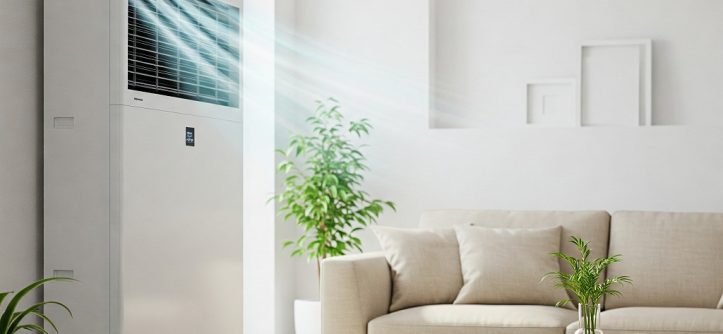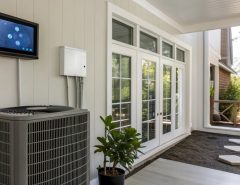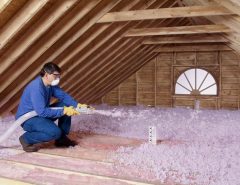When it comes to HVAC systems, bigger isn’t always better. Many homeowners assume a larger air conditioner will cool their home faster and more efficiently. But in reality, an oversized AC can lead to comfort issues, higher energy bills, and even more frequent AC repair calls. If your cooling system doesn’t seem to be performing the way it should, the problem might be its size – not its age.
Short Cycling
Short cycling happens when your AC turns on, cools the house quickly, and shuts off – only to start again within minutes. This is a typical issue with oversized units that blast cold air too fast, without running long enough for balanced airflow or humidity control.
Watch for: Your AC kicks on and off every 5–10 minutes, even on moderately warm days. You may hear frequent clicking, and the system rarely runs a full 15- to 20-minute cooling cycle. Your thermostat might reach the set temperature fast, but comfort fades quickly after.
Hot and Cold Spots in the Home
If some rooms are freezing while others never cool down, it could mean your system is too powerful to distribute air before it shuts off. Larger units don’t allow for the gradual cooling needed to condition the whole home evenly.
Watch for: Bedrooms or upstairs spaces consistently 2–4°F warmer or cooler than the rest of the house. You might also notice that some rooms feel stuffy while others are overly cold, even with all vents open.
High Indoor Humidity
An oversized AC cools the air so quickly that it doesn’t run long enough to properly remove moisture. That leaves your home cold but clammy, especially during humid summer months.
Watch for: Indoor humidity levels above 60%, foggy windows, or a damp feeling in the air even when the AC is running. If your thermostat has a humidity reading, check it—ideal levels should stay between 30–50%.
Unusually High Energy Bills
You might expect a bigger AC to be more efficient, but the extra size often leads to more frequent start-ups and stops, which use more electricity than steady operation.
Watch for: Sudden increases in your electric bill during cooling season – especially if you haven’t changed thermostat settings. Compare this year’s summer bills to last year’s. An oversized system can raise cooling costs by 20–30% or more due to inefficiency.
Loud or Frequent Start-Ups
Oversized units tend to start abruptly and run at full blast. This can cause noise, pressure changes in the ducts, and vibration throughout the home.
Watch for: Loud bangs or thuds when the system kicks on, followed by short bursts of cold air. You might also hear the system start up 4–6 times per hour, which indicates it’s not completing full cooling cycles.
What to Do If Your AC Is Too Big
If several of these signs sound familiar, it’s time to have your system evaluated. An HVAC technician can perform a Manual J load calculation to determine the correct size unit for your home’s square footage, insulation, and layout. While some issues can be corrected with zoning or duct adjustments, truly oversized systems often require replacement to fix long-term comfort and efficiency problems.
Final Thoughts
An AC that’s too big for your home might cool the air fast – but it won’t do it well. From humidity issues to constant cycling and uneven temperatures, the signs are easy to spot once you know what to watch for. If you’re dealing with these problems, don’t keep spending on AC repair without addressing the root cause. A properly sized HVAC system will keep your home more comfortable, efficient, and reliable, no matter how hot it gets outside.




